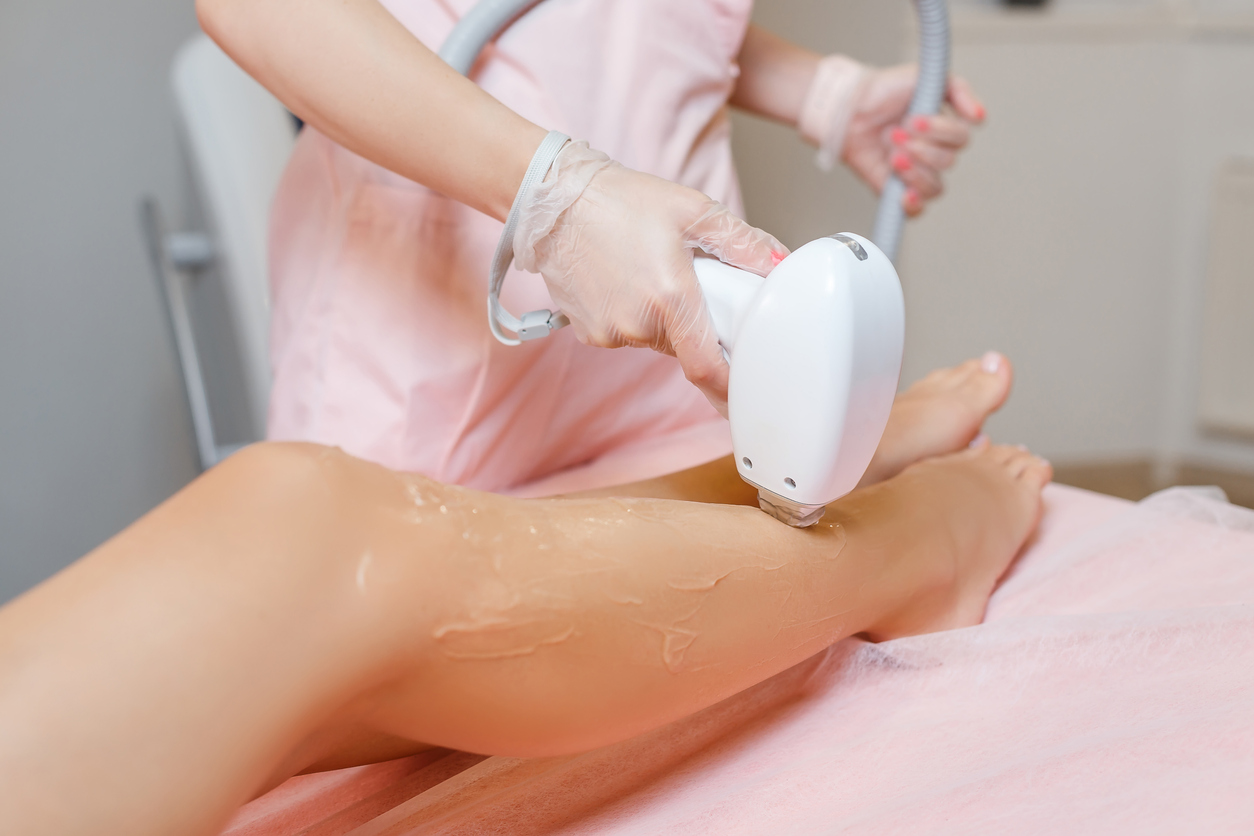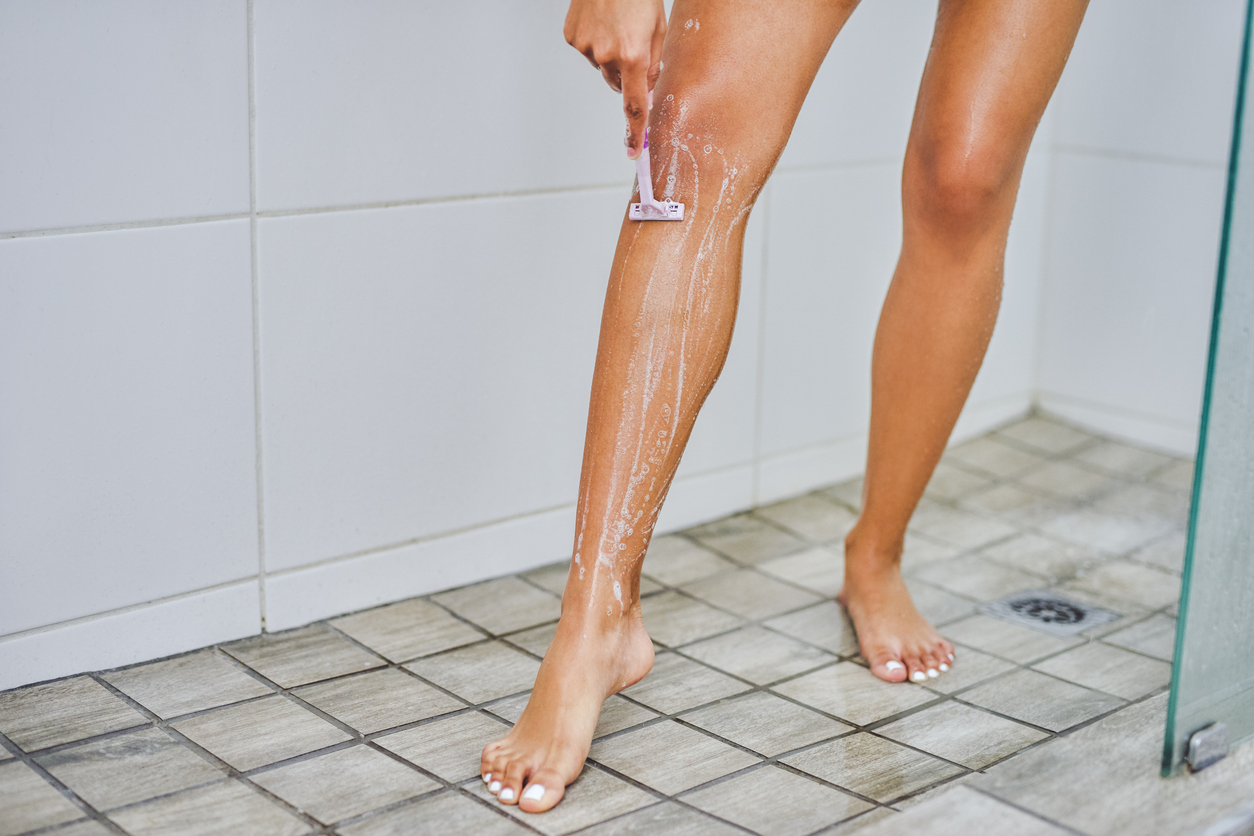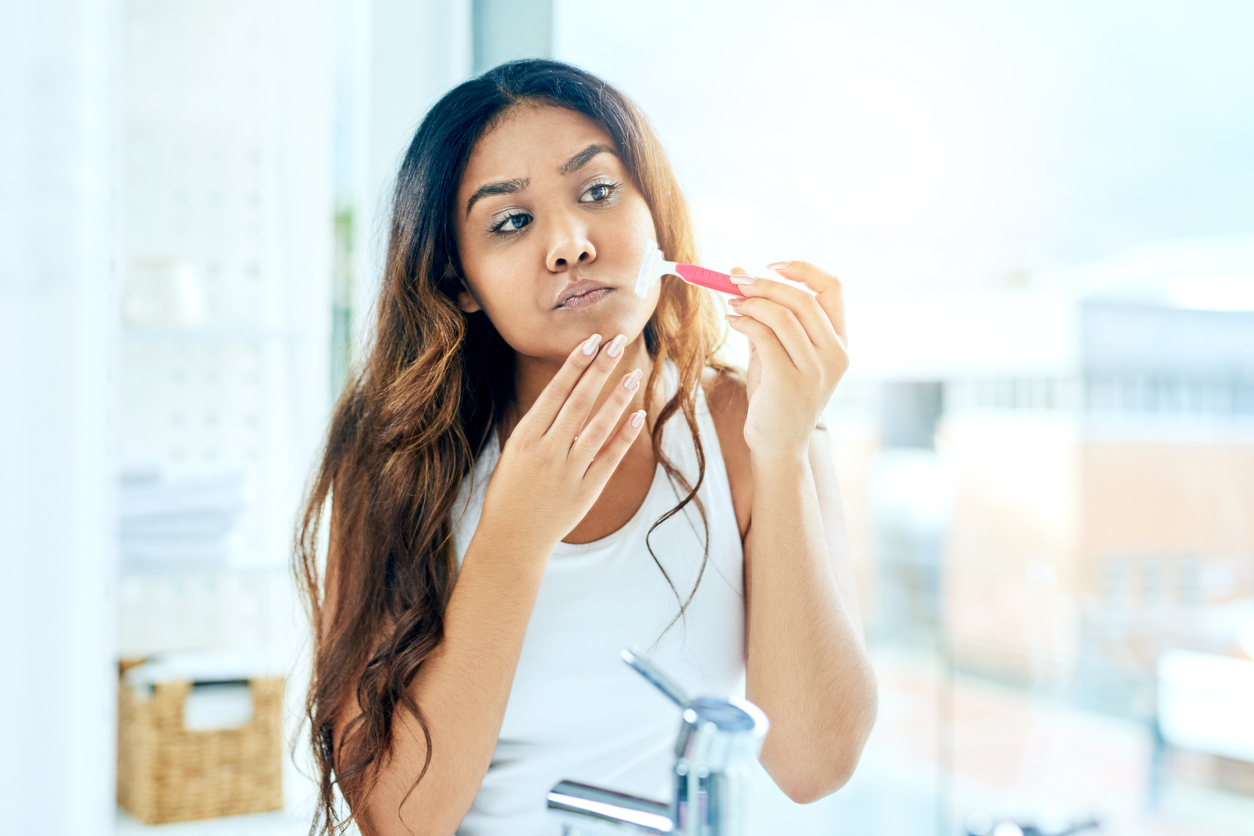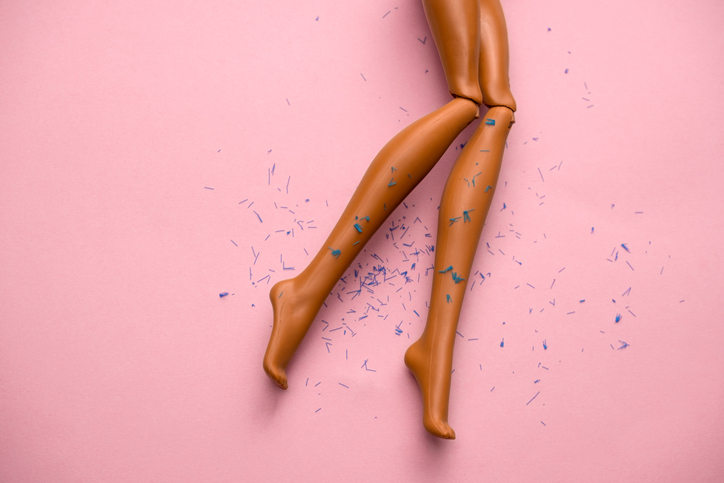What are warts?
Warts are small, rough lumps that often develop on the skin of the hands and feet.
Warts vary in appearance depending on where they are on the body and how thick the skin is. They can develop in isolation or in clusters and are non-cancerous.
Some warts are more likely to affect particular areas of the body. For example, verrucas are warts that usually develop on the soles of the feet.
Most people will have warts at some point in their life. They tend to affect children and teenagers more than adults.
Read more about the symptoms of warts.
What causes warts?
Warts are caused by an infection with the human papilloma virus (HPV).
The virus causes an excess amount of keratin, a hard protein, to develop in the top skin layer (epidermis). The extra keratin produces the rough, hard texture of a wart.
Read more about the causes of warts.
Are warts contagious?
Warts are very contagious, and close skin-to-skin contact can pass on the infection.
The infection can also be transmitted indirectly from contaminated objects or surfaces, such as the area surrounding a swimming pool.
After becoming infected, it can take weeks or even months for a wart or verruca to appear.
When to see your doctor
Most types of warts are easy to identify because they have a distinctive appearance. Although, you should always see your doctor if you have a growth on your skin you are unable to identify or are worried about.
Your doctor will be able to tell if it's a wart simply by looking at it. Where it is on your body and how it affects surrounding skin will also be taken into consideration.
You should also visit your doctor if you have a wart that:
- bleeds
- changes in appearance
- spreads
- causes you significant pain, distress or embarrassment
Treating warts
Most warts are harmless and clear up without treatment.
The length of time it takes a wart to disappear will vary from person to person. It may take up to two years for the viral infection to leave your system and for the wart to disappear.
You might decide to treat your wart if it is painful, or in an area that is causing discomfort or embarrassment.
Common methods of treatment include:
- salicylic acid
- cryotherapy (freezing the skin cells)
- duct tape
- chemical treatments
Treatment for warts is not always completely effective, and a wart will sometimes return following treatment.
Surgery is not usually recommended for warts.
Read more about how warts are treated.
Wart symptoms
Warts are not usually painful but some types, such as verrucas, may hurt. Occasionally, warts can also itch or bleed.
There are several different types of warts which all vary in size and shape. For example, warts can range from 1mm to more than 10mm (1cm) in diameter.
The different types of warts are described below.
Common warts (verruca vulgaris)
If you have a common wart it will:
- be round or oval shaped
- be firm and raised
- have a rough, irregular surface similar to a cauliflower
- often develop on the knuckles, fingers and knees
- vary in size from less than 1mm to more than 10mm (1cm) in diameter
You may develop one common wart or several.
Verrucas (plantar warts)
Verrucas usually develop on the soles of your feet. The affected area of skin will:
- be white, often with a black dot in the centre (blood vessel)
- be flat rather than raised
- sometimes be painful because your body weight can force the verruca to grow back into your skin
Plane warts
It is possible to have between one and several hundred plane warts, which can develop in clusters. They are usually:
- a yellowish colour
- smooth, round and flat-topped
- 2-4mm in diameter
- common in young children, mainly affecting the hands, face and legs
Plane warts can also sometimes develop on the lower legs of females because the human papilloma virus (HPV) can be spread through shaving.
Filiform warts (verruca filiformis)
Filiform warts are long and slender in appearance and often develop on the neck, face and nostrils.
Periungual warts
Periungual warts develop under and around the fingernails and toenails. They:
- have a rough surface
- can affect the shape of your nail
- can be painful
Mosaic warts
Mosaic warts grow in clusters and form a ‘tile-like’ pattern. They often develop on the palms of the hands and on the feet.
Causes of warts
Warts are caused by certain strains of the human papilloma virus. The virus is present in the skin cells of a wart.
The human papilloma virus (HPV) is a family of viruses that affect the skin and moist membranes (mucosa) that line the body.
There are more than 100 different strains of HPV. Different strains are responsible for different types of warts.
Spreading the virus
HPV is passed through close skin-to-skin contact. It can also be transmitted by indirect contact – for example, from contaminated objects, such as towels, shoes, areas surrounding swimming pools, or surfaces and floors of communal changing areas.
Warts are thought to be contagious for as long as they are present on your body. The virus is more likely to spread if the skin is wet, soft or has been in contact with a rough surface.
Warts can also be spread to other parts of your own body. You can spread the virus if you:
- scratch, knock or bite a wart
- bite your nails or suck your fingers (if they have warts on them)
- shave your face or legs
This can cause the wart to break up and bleed, making it easier for the virus to spread. You are particularly vulnerable if you have scratches or cuts on the soles of your feet.
Wart treatment
Warts usually clear up without treatment. However, it can sometimes take up to two years for the HPV virus to leave your system and for warts to disappear.
The length of time it takes for a wart to disappear will vary from person to person. They tend to last longer in older children and adults.
In adults and people with a weakened immune system, warts are less likely to clear up on their own or respond well to treatment.
Leaving the wart to get better by itself is one option. However, you may want to consider treatment if your wart is painful, in an awkward position, or is causing you distress or embarrassment.
Treatment options
There are a number of treatments available for warts. However, no single treatment is 100% effective, and sometimes the wart may return.
The aim of treatment is to remove the wart without it returning and without leaving any scarring.
Treatments include:
- salicylic acid
- cryotherapy
- duct tape
- chemical treatments
Surgery to treat warts is not usually recommended because warts often return and further treatment is required.
Some treatments may cause side effects such as mild pain, blistering and skin irritation around the wart.
These various treatments are described below.
Salicylic acid
Many treatments, such as creams, gels, paints and medicated plasters, are available over-the-counter from pharmacies.
Salicylic acid is the active ingredient in most of these treatments. In two-thirds of cases, research has shown that hand warts clear up within 12 weeks of treatment with salicylic acid.
There is limited evidence available to show which type of salicylic acid treatment (ointment, cream or gel) is most effective. However, it has been shown that salicylic acid is effective at treating warts.
Salicylic acid and other wart treatments also destroy healthy skin, so it is important to protect your skin before applying the treatment. You can use petroleum jelly or a corn plaster to cover the skin around the wart.
Before applying the treatment to your wart, use a rough surface, such as an emery board or pumice stone, to get rid of any excess skin around the affected area (avoid sharing the pumice stone with others). Soak the wart in water for about five minutes to soften the skin.
After soaking your wart, follow the instructions that come with the medication. You may need to apply the treatment daily for 12 weeks or longer. You should stop the treatment if your skin becomes sore and seek advice from your doctor or pharmacist.
Do not use treatments that contain salicylic acid to treat warts on your face. Ask your doctor or pharmacist for advice about the best type of treatment.
Also consult your doctor before using over-the-counter treatments that contain salicylic acid if you have poor circulation – for example, if you have a condition such as diabetes or peripheral vascular disease. This is because there is an increased risk of damage to your skin, nerves and tendons.
Cryotherapy
In cryotherapy liquid nitrogen is sprayed onto your wart to freeze and destroy the affected skin cells. After treatment, a sore blister will form, followed by a scab which will fall off 7-10 days later.
Cryotherapy usually takes 5-15 minutes and it can be painful. Large warts sometimes need to be frozen a number of times, a week or so apart, before they clear up.
The exact method of cryotherapy may differ between healthcare professionals. Liquid nitrogen may be sprayed directly onto the wart or may be applied using a stick with cotton wool on the tip. This method is often preferred for treatment around the eyes or for small children.
Cryotherapy may be recommended if you have a wart on your face. This is because the risk of irritation is lower than when using salicylic acid or duct tape.
Cryotherapy is not usually recommended to treat young children because they may find the treatment too painful, or it may be difficult for them to stay in the same position while having the treatment.
Possible side effects of cryotherapy include:
- pain and blistering
- your skin may become darker (hyperpigmentation) or lighter (hypopigmentation), particularly if you have black skin
- your nails may develop an abnormal change in shape or structure if cryotherapy is used to treat warts that develop under the nails (periungual warts)
Cryotherapy is sometimes carried out at doctors' surgeries or at hospital skincare clinics.
A very cold spray (dimethyl-ether/propane) is also available from pharmacies, which you can apply yourself. You should avoid using this spray on your face. There is a lack of evidence to support the effectiveness of dimethyl-ether/propane spray compared with cryotherapy with liquid nitrogen.
Duct tape
Treatment with duct tape involves placing a piece of duct tape over your wart for about six days. If the tape falls off, simply replace it with a fresh piece. After six days, remove the tape and soak the wart in water.
After soaking the wart, use an emery board or pumice stone to get rid of any rough areas. Leave the wart uncovered over night and apply a new piece of duct tape the following morning. This procedure should be repeated for a period of up to two months.
There is limited evidence to support the effectiveness of using duct tape to treat warts. However, side effects of this type of treatment are rare, although in some cases skin irritation may occur.
Chemical treatments
Warts can also be treated using chemical treatments available on prescription. The treatments contain chemicals such as:
- [formaldehyde]
- [glutaraldehyde]
- podophyllin
These chemicals are dabbed on the warts to kill affected skin cells.
Potential side effects of chemical treatments include:
- staining the skin brown (with glutaraldehyde)
- intense swelling (with podophyllin)
- infection following treatment (with podophyllin)
Do not use podophyllin if you are pregnant or are planning to become pregnant as there is evidence on animal studies that this could harm your baby. All women who use this medication who are of childbearing age should also be taking contraception. Speak to your doctor before use if you are unsure.
Treating warts during pregnancy
If you are pregnant and have warts, your doctor may recommend using salicylic acid, cryotherapy or duct tape.
Salicylic acid can be used to treat warts during pregnancy as long as it is used on a small area for a limited period of time.
Preventing warts
Most people will be infected by the human papilloma virus at some point in their life and develop warts.
However, there are steps you can take to lower your chances of getting warts and prevent spreading them to others if you have them.
The following advice may help prevent a wart or a verruca developing.
- Do not touch other people’s warts.
- Do not share towels, flannels or other personal items with someone who has a wart.
- Do not share shoes or socks with someone who has a verruca.
- Avoid scratching or picking your wart or verruca because it will encourage the HPV to spread to other parts of your body.
- Take care when shaving because the virus can be spread easily if you cut yourself.
- Keep your feet dry and change your socks every day to help prevent warts developing on your feet.
If you have a wart or verruca, you should cover it up when taking part in communal activities. For example, you should:
- wear pool slippers or flip-flops in communal areas, such as changing rooms and showers
- cover your wart or verruca with a waterproof plaster or a verruca sock when you go swimming, or while doing physical education at school
- wear gloves when using shared gym equipment if you have a wart on your hand





